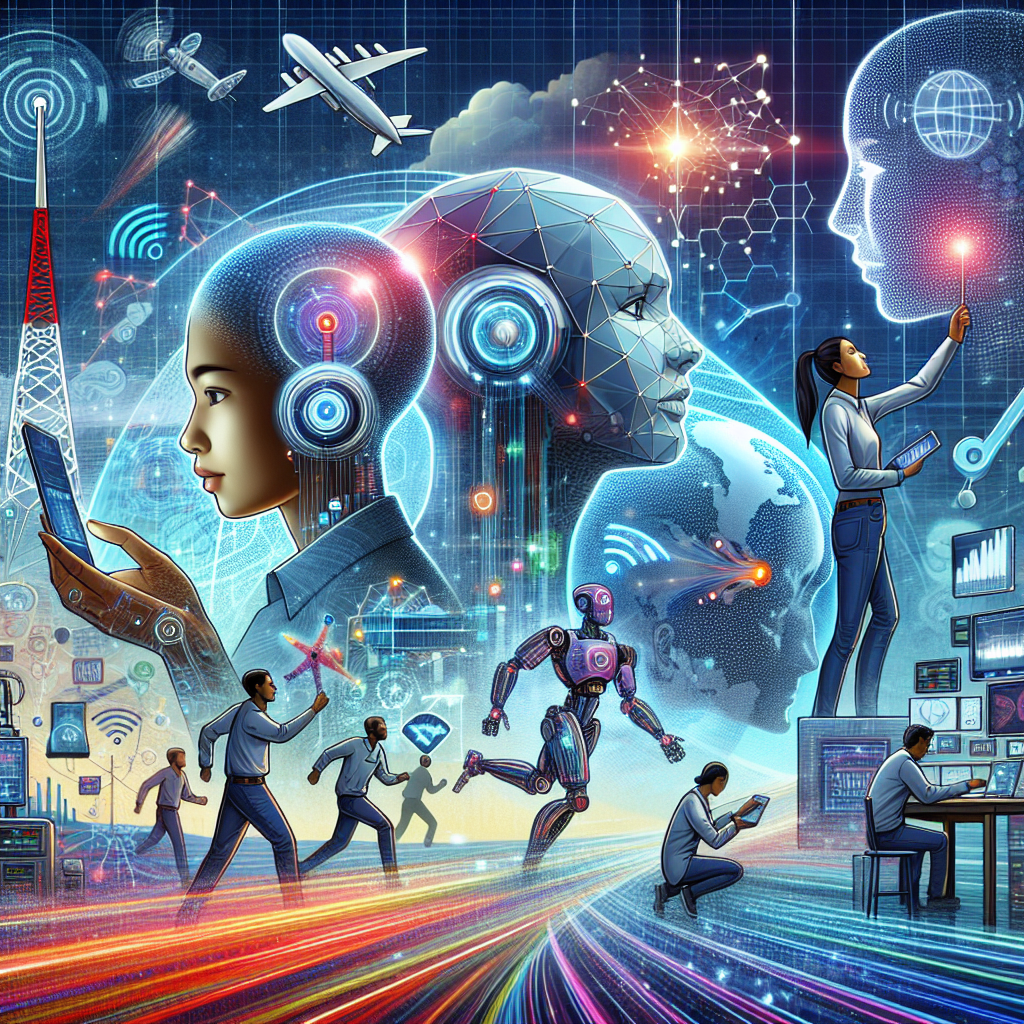The Future of Telecommunications: AI and Connectivity
Telecommunications has come a long way in the past few decades, from the invention of the telephone to the development of smartphones and high-speed internet. The future of telecommunications is poised to be even more revolutionary, with the integration of artificial intelligence (AI) and advanced connectivity technologies. In this article, we will explore how AI and connectivity are shaping the future of telecommunications and what we can expect in the coming years.
AI in Telecommunications
Artificial intelligence is already playing a significant role in the telecommunications industry, with companies using AI-powered tools for network optimization, customer service, and predictive maintenance. AI algorithms can analyze vast amounts of data to identify patterns and trends, helping companies improve network performance and deliver better service to customers.
One of the key areas where AI is making a big impact in telecommunications is in customer service. AI-powered chatbots and virtual assistants are becoming increasingly common, providing customers with quick and efficient support 24/7. These AI tools can handle a wide range of queries, from billing issues to technical troubleshooting, freeing up human agents to focus on more complex problems.
AI is also being used to improve network security, with algorithms that can detect and respond to cyber threats in real-time. By continuously monitoring network traffic and analyzing patterns, AI can help companies identify and mitigate security risks before they escalate.
In the future, AI is expected to play an even bigger role in telecommunications, with advancements in machine learning and natural language processing. AI-powered voice assistants, for example, could become more sophisticated and intuitive, providing customers with personalized recommendations and assistance based on their preferences and behavior.
Connectivity Technologies
In addition to AI, advanced connectivity technologies are also shaping the future of telecommunications. The rollout of 5G networks, for example, is expected to bring faster speeds, lower latency, and greater capacity to mobile devices and IoT devices. This will enable new applications and services that require high bandwidth and low latency, such as augmented reality, virtual reality, and autonomous vehicles.
Another key connectivity technology that is gaining traction is the Internet of Things (IoT), which refers to the network of interconnected devices and sensors that can communicate with each other and with cloud-based services. IoT devices are already being used in a wide range of industries, from healthcare to manufacturing, and are expected to become even more prevalent in the coming years.
One of the key challenges of IoT is managing the massive amounts of data generated by these devices. Edge computing, which involves processing data closer to where it is generated, is emerging as a solution to this problem. By processing data at the edge of the network, companies can reduce latency and bandwidth usage, making IoT applications more efficient and responsive.
In the future, we can expect to see even more advanced connectivity technologies, such as satellite internet and quantum communication. Satellite internet, for example, could provide high-speed internet access to remote areas that are not served by traditional broadband networks, while quantum communication could enable ultra-secure communication channels that are resistant to hacking and interception.
FAQs
Q: How will AI impact the job market in the telecommunications industry?
A: AI is expected to automate many routine tasks in the telecommunications industry, such as network optimization and customer service. While this could lead to job displacement in some areas, it is also expected to create new opportunities for skilled workers in AI development and data analysis.
Q: Will 5G networks replace 4G networks?
A: While 5G networks offer faster speeds and lower latency than 4G networks, it is unlikely that 4G networks will be completely replaced anytime soon. 4G networks will continue to be used for areas where 5G coverage is not available or for devices that do not support 5G technology.
Q: How will IoT impact privacy and security?
A: IoT devices raise concerns about privacy and security, as they collect and transmit sensitive data. Companies will need to implement robust security measures, such as encryption and authentication, to protect IoT devices from cyber threats. Consumers should also be vigilant about securing their devices and regularly updating their software.
In conclusion, the future of telecommunications is bright, with AI and advanced connectivity technologies driving innovation and transformation in the industry. From AI-powered customer service to 5G networks and IoT devices, we can expect to see a host of new applications and services that will revolutionize how we communicate and connect with each other. By staying informed and embracing these new technologies, we can look forward to a future where telecommunications is faster, more efficient, and more secure than ever before.

